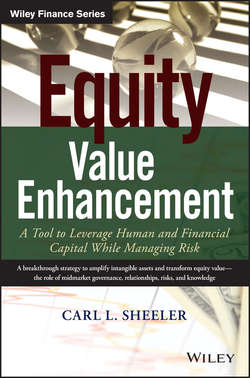Читать книгу Equity Value Enhancement - Sheeler Carl L. - Страница 8
Preface
Some Sobering Realities
ОглавлениеFrom the fledging entrepreneur to the seasoned corner-office executive of a global company, growth decisions are made based on “build versus buy.” Build is organic growth, and buy is through merger and acquisition. It comes down to the risks and rewards of the time value of money.
No one chooses to start or acquire a business because they want to fail. Yet, the odds are stacked against even the most capable, regardless of which business path followed. Those who acquire must have adequate understanding of their capital needs (both human and financial) and their optimal utilization. Those who opt to go the angel investor/venture capital–backed route suffer a failure rate north of 90 percent. They often give up equity to their investors and set their sights on achieving hyper-growth as a result of their innovation.
However, those who choose the bootstrapping or “family and friends” funding route face a slightly better but still dismal failure rate near 80 percent within two to five years. They retain their equity, believing their idea will blossom into a sustainable business.
Small businesses ($5 million and lower revenues) have only a 25 percent chance of selling. Larger businesses that are acquired fail to achieve the synergies sought over 80 percent of the time, creating seller's and buyer's remorse. And, within three generations, many family businesses usually cease to exist or have been sold at least 85 percent of the time. Advisors are either part of the solution or observers to these preventable, sobering statistics.
Why do entrepreneurs still pursue the brass ring given these abysmal statistics? They're usually spurred on by the businesses that do succeed – something I call selection bias (ignoring the preponderance that fail). Or, they are either unaware of or oblivious to the high potential of failure – something I refer to as Economic Darwinism. They believe in themselves and their idea, ignoring all potential naysayers. Their demise is often failing to plan, which is a plan to fail.
What does this have to do with value creation? It should be obvious: Those who have achieved significant value are exceptional in the manner in which their investment is measured and managed. Those who overlook these critically important metrics and actions are more apt to fail.
